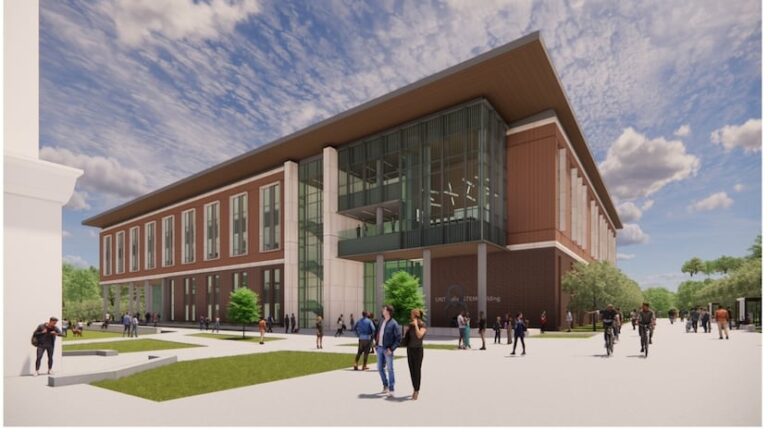The $100 million facility being built at the University of North Texas at Dallas will primarily support first-generation and minority students who want to work in the medical field.
When it opens for the spring 2026 semester, the 130,000-square-foot, four-story building will include up to 20 classrooms, nine teaching labs, and three research labs. University and political leaders held a groundbreaking ceremony for the facility last week.
“Most of our students are local first-generation students. We already send some to medical and dental school, but this facility will accelerate that trend and bring more medical professionals to these high-needs schools.” “It will supply the field,” said UNT Dallas Chancellor Bob Mong.
UNT Dallas currently offers bachelor's degrees in majors such as biology, chemistry, public health, mathematics, and information technology.
Since 2017, the number of biology majors has increased by more than 2,000 percent, and the number of public health majors has increased by 1,800 percent, according to Chancellor Betty Stewart. Starting this fall, 502 students were enrolled in the program. This represents his 16.4% of UNT Dallas' total undergraduate enrollment.
Stewart said the new building could double enrollment and support as many as 8,000 students.
The university is also considering adding healthcare-related academic programs.
“Our sister institution, the University of North Texas Health Science Center [in Fort Worth] We are starting a nursing program. We work closely with them to recruit students into their programs,” Mon said. “Therefore, once this building opens, it is likely that nursing training will take place on our campus.”
Stewart said UNT Dallas is conducting market analysis to determine what new academic programs are most in demand. “We are looking at supporting local health partners like Methodist Hospital.”
Funding from the Texas Legislature
The project will be fully funded by revenue bonds approved by the Texas Legislature in 2021.
“There are 37 public four-year universities in Texas, but only four of them received more than $100 million in the 87th General Assembly,” Mon said.
UNT Dallas stood out in the request for funding to the state because the new facility is aimed at training students to work in the metropolitan medical field, rather than research, he said.
Increasing diversity in the healthcare workforce
Mong said 85% of UNT Dallas students are racial minorities. He said the campus is also socio-economically diverse, with most students financing their education through Pell grants or state grants.
Mon said the state's investment will make it easier for the agency to raise money from donors to support other programs that support underserved students who want to work in the health care industry. Ta.
The new building will include a student STEM center and resources and advice for students applying to the Joint Admissions Medical Program, a program that helps low-income Texans prepare for medical school entrance exams and apply to medical school. A space will be provided to provide.
Lauren Herrera is a biology major and chemistry minor at UNT Dallas with plans to attend medical school in the future.
“Since I’ve been here, the university has been very helpful, even though the STEM center is just one room. [right now]. It will be crazy to see how much they can help others throughout the building,” Herrera said.
Mon said the new building will also help expand UNT Dallas' early high school program, where students from Sunset High School in Oak Cliff can earn an associate's degree in public health.
Impact on local economy
In addition to classrooms, new labs, and a resource center, the building has several open spaces on the top floor to accommodate large-scale event venues and new equipment as science and medical education evolve. His $100 million investment also includes upgrades to his four existing research institutes at UNT Dallas.
The new facility is expected to spur other investment in south Dallas. Two of his mixed-use developments, University Hills and Ribulette, are already under construction nearby.
“Dallas is a very large city south of Interstate 30, but only about 19% of the city contributes to the city's tax base,” Mon said. “Our university is an important part of economic development here. It will play a major role in stimulating the future.”
Stewart said the building will provide opportunities for students while also helping solve the health care worker shortage in North Texas.
“We want to prepare our students for meaningful and productive careers in STEM fields, and we feel this building will also help meet the staffing needs of healthcare employers. ” she said.

